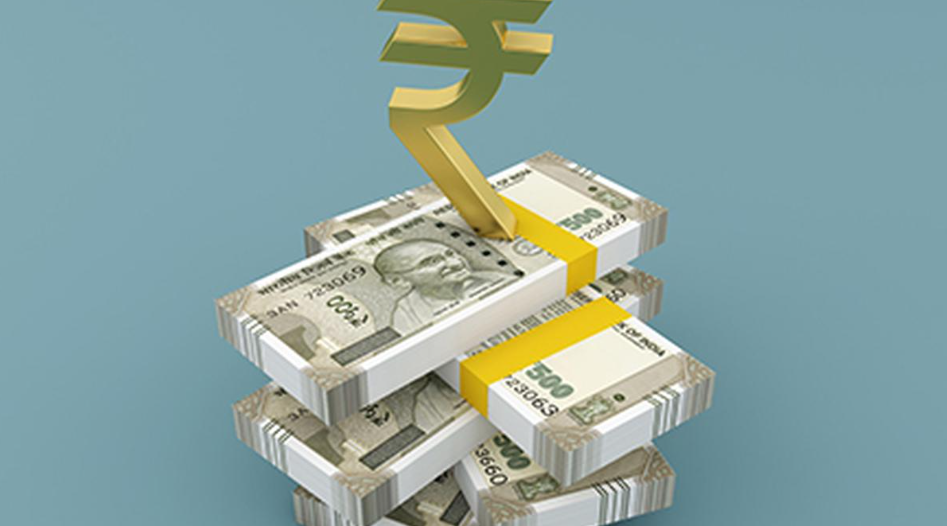1. Introduction: A Turbulent Journey for the Indian Rupee
Rupee Recovers Indian rupee recovered slightly from its record low, gaining 4 paise to settle at 85.87 against the US dollar. Despite the improvement, the local currency continues to grapple with intense selling pressure in domestic equities, foreign capital outflows, and a strengthening dollar bolstered by robust macroeconomic indicators in the United States.
This article explores the factors behind the rupee’s recovery, its ongoing challenges, Rupee Recovers and the broader implications for India’s economy and financial markets.
2. Performance Snapshot: From Record Low to Modest Recovery
2.1 Opening Struggles
The rupee opened at an unprecedented low of 85.91,Rupee Recovers weighed down by continued selling in equity markets. Market participants were on edge as concerns over foreign fund outflows mounted.
2.2 Day’s Trading
After an initial slump, the rupee regained some strength due to intervention by the Reserve Bank of India (RBI) and a decline in crude oil prices, Rupee Recovers closing at 85.87—up 4 paise from the previous close of 85.91. 
3. Key Factors Influencing the Rupee’s Movement
3.1 Persistent Foreign Outflows
Foreign Institutional Investors (FIIs) have been net sellers in Indian markets, offloading equities worth over ₹3,300 crore in recent sessions. These outflows exacerbate pressure on the rupee, creating a demand-supply mismatch in the forex market.
3.2 Strengthening US Dollar
The US dollar has gained strength due to positive economic data:
- GDP Growth: Recent figures indicate robust growth in the US economy.
- Job Market: A strong labor market has boosted confidence in the dollar.
- Rate Hikes: The Federal Reserve’s hawkish stance, with possible future rate hikes, Rupee Recovers continues to attract capital to the US.
3.3 Domestic Equity Market Turmoil
A decline in Indian stock indices such as the Sensex and Nifty added to the rupee’s woes, Rupee Recovers reflecting waning investor confidence amid global and domestic uncertainties.
3.4 RBI Intervention
The Reserve Bank of India played a crucial role in stabilizing the rupee by intervening in the forex market and selling dollars from its reserves.
4. The Role of Crude Oil Prices
4.1 Decline in Global Crude Oil Prices
Crude oil prices fell slightly during the trading session, providing temporary relief to the rupee. India, being a net importer of oil, benefits when prices ease, reducing its import bill.
4.2 Energy Demand Dynamics
Fluctuations in energy demand and geopolitical factors, particularly in the Middle East ,Rupee Recovers continue to influence global crude prices and, consequently, the rupee’s value.
5. Macroeconomic Indicators Impacting the Rupee
5.1 Inflation and Interest Rates
High domestic inflation limits the central bank’s ability to cut rates, indirectly affecting the rupee’s stability.
5.2 Trade Deficit
India’s trade deficit has widened due to rising imports and slower export growth, exerting pressure on the rupee.
5.3 GDP Growth Prospects
India’s economic growth remains a positive factor, but any slowdown in key sectors could negatively impact currency stability.
6. Comparisons with Other Emerging Market Currencies
Emerging market currencies, including the Indian rupee, have been under similar pressure due to:
- Capital Outflows: Foreign investors are moving funds to safer assets in developed economies.
- Dollar Strength: Most EM currencies have weakened against the dollar,Rupee Recovers reflecting global market trends.
Countries like Brazil, South Africa, and Turkey face challenges akin to India, highlighting the rupee’s struggle in a broader global context.
7. Policy Responses and Interventions
7.1 RBI’s Role
- Regular market interventions to curb excessive volatility.
- Maintaining adequate forex reserves to stabilize the currency.
7.2 Fiscal Policy Measures
The government may consider fiscal stimulus packages or trade policies to boost exports and attract foreign investment.
8. Expert Insights: What Analysts Say
8.1 On Rupee’s Recovery
Forex analysts attribute the slight recovery to short-term factors such as RBI intervention and lower oil prices, cautioning that sustained pressures persist.
8.2 Long-Term View
While the rupee’s outlook depends heavily on global developments, Rupee Recovers analysts believe robust macroeconomic fundamentals can support the currency in the long run.
9. Impact on Key Stakeholders
9.1 Importers
A weaker rupee increases import costs, especially for crude oil, electronic goods, Rupee Recovers and machinery, affecting businesses reliant on imports.
9.2 Exporters
Conversely, exporters benefit from a depreciating rupee as their products become more competitive in global markets.
9.3 Common Citizens
- Fuel Prices: A weaker rupee contributes to higher petrol and diesel prices.
- Travel Costs: Overseas travel becomes more expensive.
- Consumer Goods: Imported goods like electronics see price hikes.
10. Broader Economic Implications
10.1 Inflation
Depreciation raises import costs, fueling inflation in the domestic market.
10.2 Foreign Investment
Sustained volatility in the rupee could deter foreign investors, Rupee Recovers impacting India’s long-term growth prospects.
11. Global Context: Dollar Dominance and EM Challenges
The strengthening dollar has posed challenges globally:
- Other emerging markets face similar currency pressures.
- Central banks worldwide are grappling with inflation and interest rate policies.
India’s challenges underscore broader concerns in the global financial landscape.
12. Way Forward for the Rupee
12.1 Enhancing Forex Reserves
RBI’s forex reserves are a critical buffer against currency volatility ,Rupee Recovers requiring effective management.
12.2 Attracting FDI
Policymakers must focus on structural reforms to attract long-term Foreign Direct Investment (FDI).
12.3 Promoting Exports
Improving the competitiveness of Indian exports could help narrow the trade deficit.
12.4 Policy Synchronization
A coordinated approach between monetary and fiscal policy is vital to stabilize the rupee.
13. Conclusion: A Path to Stability
The Indian rupee’s recovery to 85.87 against the US dollar offers a glimmer of hope amid turbulent times. However, the persistent pressures of foreign fund outflows, Rupee Recovers equity market volatility, and a strong US dollar underline the challenges ahead.
Effective policy interventions, coupled with India’s inherent economic strengths, Rupee Recovers can help navigate this period of uncertainty. For now, investors and policymakers must remain vigilant, adapting to a rapidly evolving global economic environment. ALSO READ:-Sensex and Nifty Tumble as Foreign Outflows Continue: TCS Earnings in Focus 2025